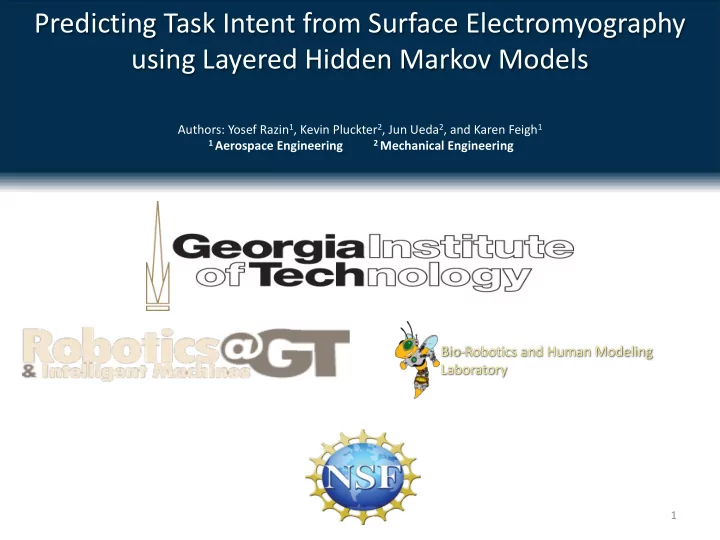

Predicting Task Intent from Surface Electromyography using Layered Hidden Markov Models Title Slide Authors: Yosef Razin 1 , Kevin Pluckter 2 , Jun Ueda 2 , and Karen Feigh 1 1 Aerospace Engineering 2 Mechanical Engineering Bio-Robotics and Human Modeling Laboratory 1
Motivation Example of Future Application [1] 2
Motivation Example Oscillatory System [1] 3
LHMM and sEMG • sEMG: measurements of electrical Prediction Layer signals from muscles • Useful for endpoint stiffness estimation Classification Layer Layered Hidden Markov Model Triceps Brachii (TB) muscle Bicep Brachii (BB) muscle • Properties: • Modular • Quick to Train Flexor Carpi Ulnaris Extensor Carpi Ulnaris • Use of Markov Assumptions (FCU) muscle (ECU) muscle Cocontraction Muscle Groups [2] 4
LHMM Settings • Best feature sets included 3-d.o.f. force readings and EMG data • Prediction Layer Performance over • Worst feature sets were missing 3-d.o.f. time vs. number of nodes force readings or included extra EMG • Performance Ranking switch for 3 and features 4 nodes at 50 ms • Minimal performance difference across number of nodes Feature Set vs. Number of Nodes vs. Error Rate Number of Nodes vs. Error Rate 5
Results • Novel haptic device operator intent prediction algorithm – Better classification performance than many other algorithms Classification Ranking for Performance of LHMM vs. Other Learning Algorithms – Full system accuracy up to 82% with 50 ms window 6
Thank You Model Solution [1] Credit: GM Global Research & Development [2] Gallagher, W.J., "Modeling of operator action for intelligent control of haptic human-robot interfaces." (2013). 7
Recommend
More recommend